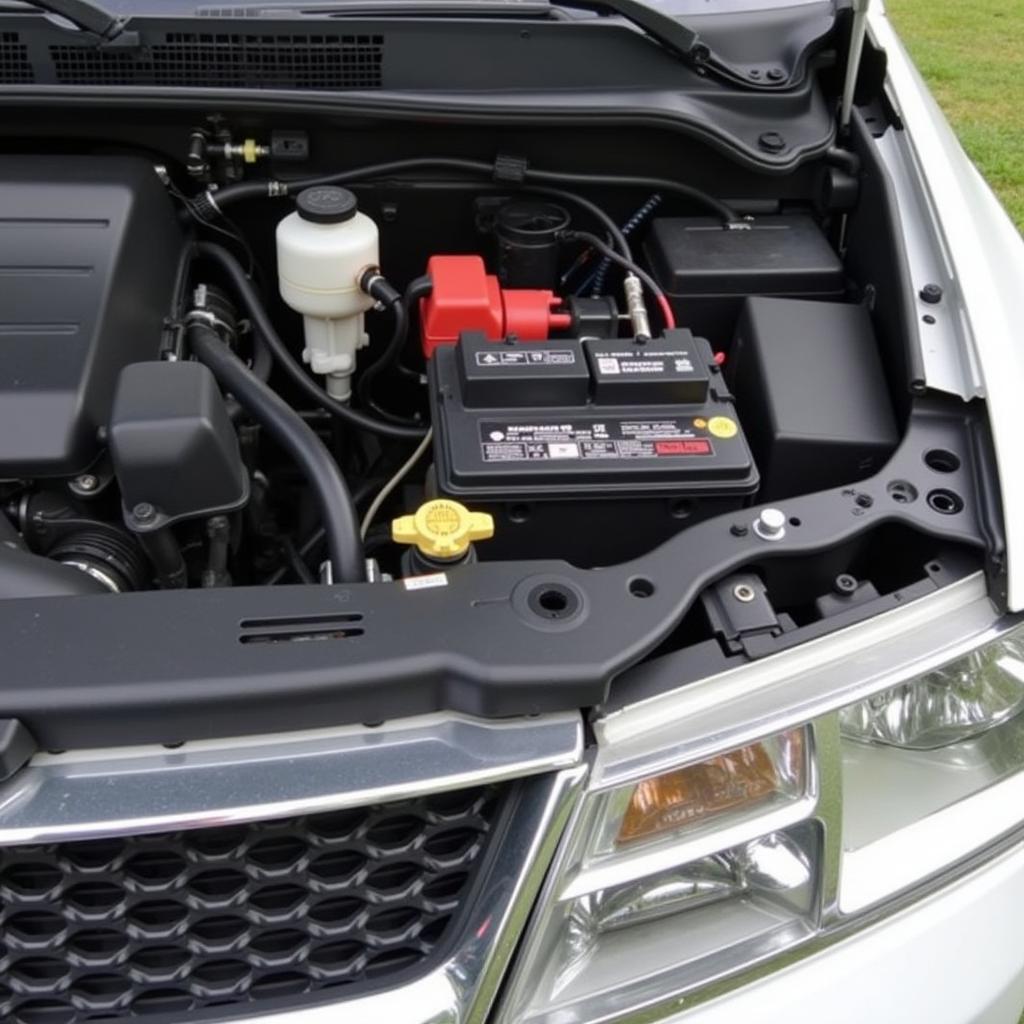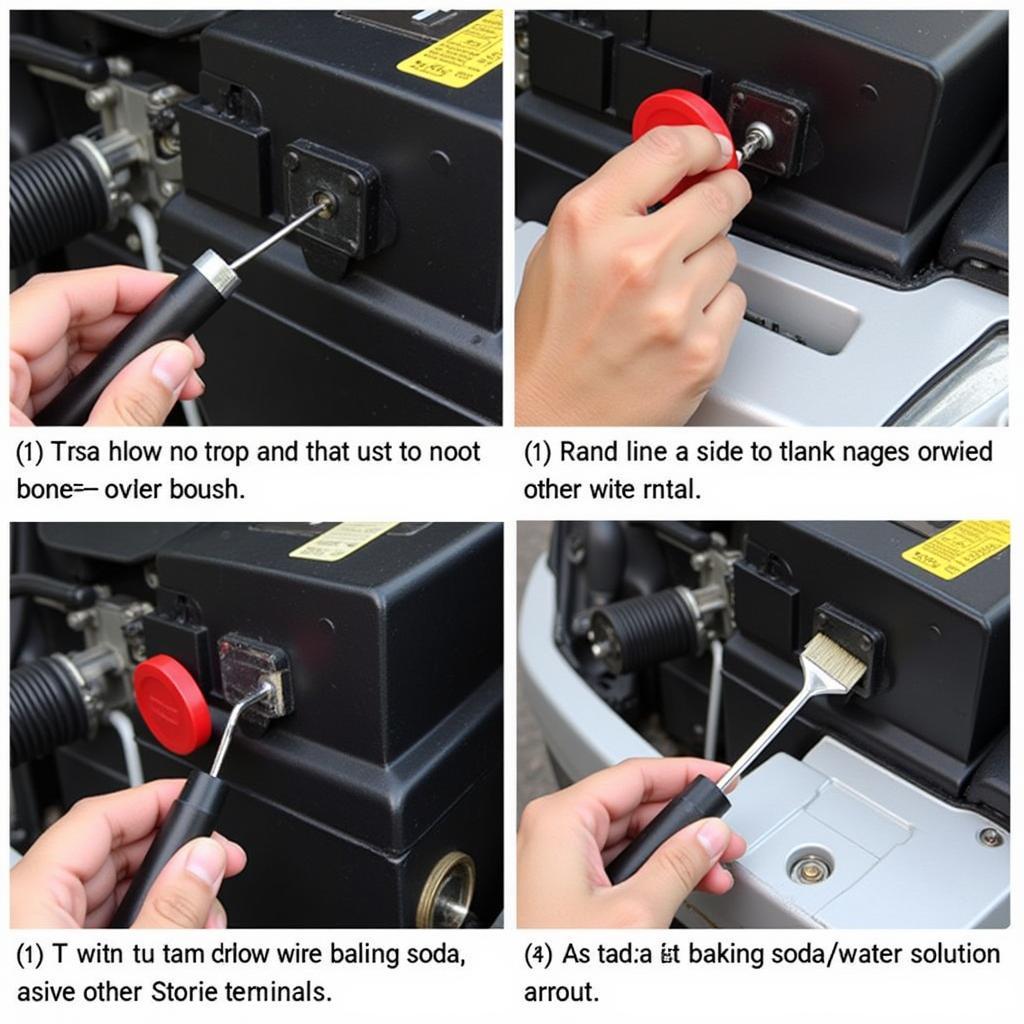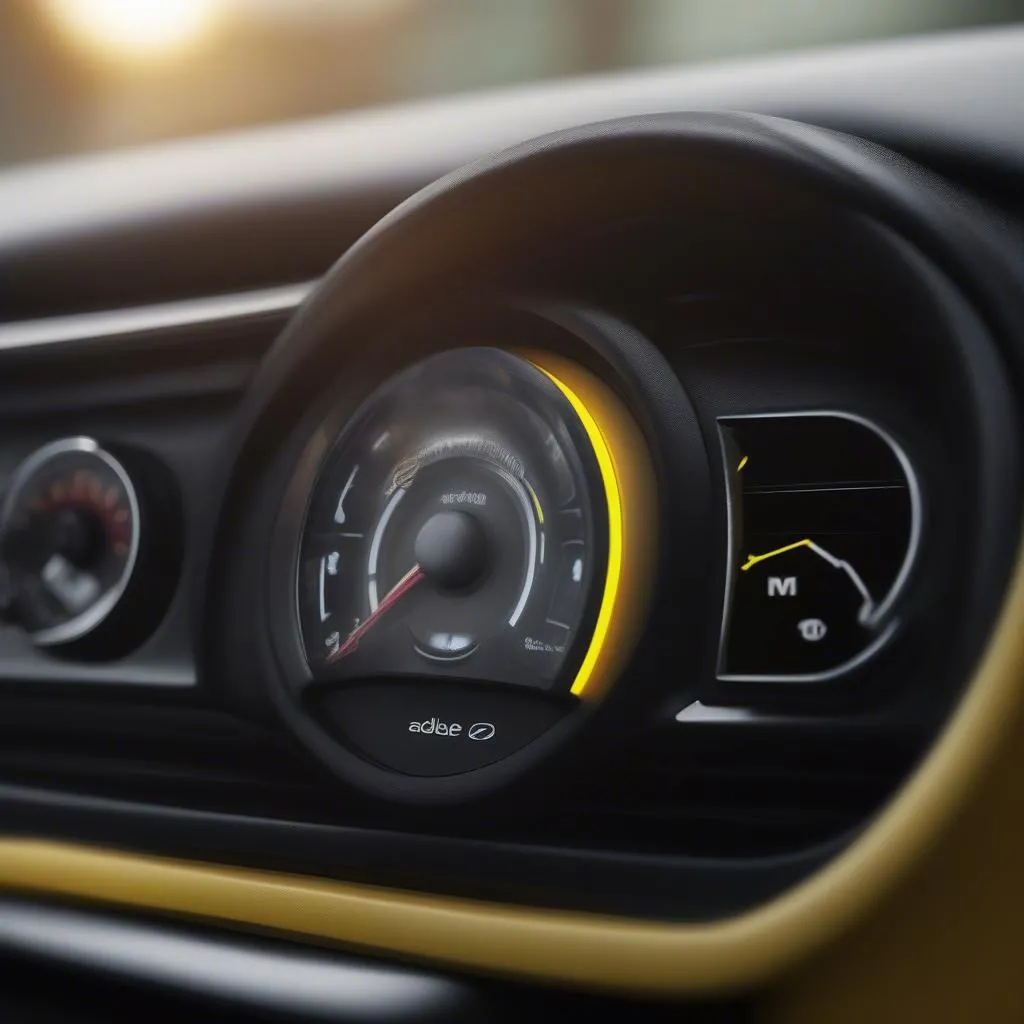The 2013 Dodge Journey is a popular crossover SUV, but like any vehicle, it can experience battery issues. This article will delve into common 2013 Dodge Journey battery problems, providing troubleshooting tips and solutions to get you back on the road. Whether you’re experiencing slow cranking, dimming lights, or a completely dead battery, we’ll cover everything you need to know to diagnose and resolve the issue.
Common 2013 Dodge Journey Battery Problems
Several factors can contribute to battery issues in a 2013 Dodge Journey. These include:
- Age: Car batteries typically last 3-5 years. If your Journey’s battery is older than this, it’s likely nearing the end of its lifespan.
- Extreme Temperatures: Both extreme heat and cold can significantly impact battery performance. Hot weather can accelerate the chemical reactions within the battery, leading to premature failure. Cold weather can slow down these reactions, making it harder for the battery to provide enough power.
- Parasitic Drain: A parasitic drain occurs when an electrical component continues to draw power even when the vehicle is off. This can slowly drain the battery over time. Common culprits include interior lights, faulty door switches, and aftermarket accessories.
- Corrosion: Corrosion on the battery terminals can prevent proper electrical connections, leading to starting problems and other issues.
- Alternator Issues: A malfunctioning alternator can prevent the battery from being properly charged while the engine is running, eventually leading to a dead battery.
Troubleshooting 2013 Dodge Journey Battery Issues
Before replacing the battery, it’s important to troubleshoot the problem to ensure that’s the actual cause. Here are some steps you can take:
- Check the Battery Terminals: Inspect the battery terminals for corrosion. If you see a white, powdery substance, clean it off with a wire brush and a mixture of baking soda and water.
- Test the Battery Voltage: Use a multimeter to test the battery voltage. A fully charged battery should read around 12.6 volts. A lower reading indicates a discharged battery.
- Test the Alternator: With the engine running, the alternator should be charging the battery. Use a multimeter to check the voltage across the battery terminals. It should read between 13.5 and 14.5 volts.
- Check for Parasitic Drain: With the vehicle off and all accessories turned off, disconnect the negative battery cable and connect a multimeter in series between the cable and the battery terminal. A reading of more than 50 milliamps suggests a parasitic drain.
Solutions for 2013 Dodge Journey Battery Issues
Once you’ve identified the cause of the battery problem, you can take appropriate action. This may include:
- Battery Replacement: If the battery is old or damaged, it’s time for a replacement. Choose a battery with the correct group size and cold cranking amps (CCA) for your Journey.
- Alternator Repair or Replacement: If the alternator is faulty, it needs to be repaired or replaced.
- Addressing Parasitic Drain: Identify and fix the source of the parasitic drain. This may involve replacing a faulty switch, disconnecting an aftermarket accessory, or repairing a wiring issue.
- Regular Maintenance: Regular battery maintenance can help prolong its lifespan. This includes cleaning the terminals, checking the electrolyte level (if applicable), and having the battery tested periodically.
 2013 Dodge Journey Battery Location: Identifying and Accessing the Battery
2013 Dodge Journey Battery Location: Identifying and Accessing the Battery
How to Jump Start a 2013 Dodge Journey
If your Journey’s battery is completely dead, you can jump-start it using another vehicle or a portable jump starter.
- Connect the positive (red) cable from the good battery to the positive terminal of the dead battery.
- Connect the negative (black) cable from the good battery to a clean, unpainted metal surface on the dead vehicle’s engine block.
- Start the vehicle with the good battery and let it run for a few minutes.
- Start the dead vehicle.
- Disconnect the cables in reverse order.
Preventative Maintenance for your 2013 Dodge Journey Battery
Regular maintenance is key to preventing future 2013 Dodge Journey battery issues. This includes:
- Regularly cleaning the battery terminals: Corrosion can impede the flow of electricity.
- Having the battery tested annually: This helps identify potential problems before they become major issues.
- Limiting short trips: Short trips don’t give the alternator enough time to fully recharge the battery.
- Turning off all accessories when the vehicle is not in use: This prevents parasitic drain.
 Cleaning 2013 Dodge Journey Battery Terminals: A Guide to Preventing Corrosion
Cleaning 2013 Dodge Journey Battery Terminals: A Guide to Preventing Corrosion
Conclusion
2013 Dodge Journey battery issues can be frustrating, but with a little troubleshooting and preventative maintenance, you can keep your vehicle running smoothly. By understanding the common causes and solutions, you can address any battery problems quickly and effectively.
FAQ
- How long does a 2013 Dodge Journey battery last? Typically 3-5 years.
- What are signs of a bad battery? Slow cranking, dimming lights, clicking sounds when turning the key.
- Can I replace the battery myself? Yes, it’s a relatively straightforward process.
- How do I prevent 2013 Dodge Journey battery issues? Regular maintenance, including cleaning terminals and limiting short trips.
- What causes a parasitic drain? Faulty electrical components drawing power even when the vehicle is off.
- How much does a 2013 Dodge Journey battery cost? Prices vary, but you can expect to pay between $100 and $200.
- What should I do if my 2013 Dodge Journey won’t start? Try jump-starting it or have it towed to a mechanic.

